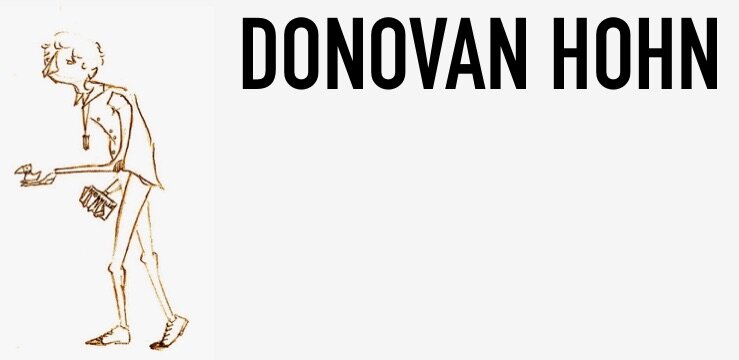Whatever the subject, his literary mission remains constant: to wrestle onto the page “a multitude of facts whose significance is neither stable nor self-evident”—what writer Guy Davenport has called “doubtful certainties.” The goal is not so much to plumb rock-bottom truths as to shine light into murky crevices. . . . The evocative title . . . “The Inner Coast,” refers most directly to the shores of the Great Lakes, where land and water meet in the middle of the country. But it also reflects something of the nature of Mr. Hohn’s writing, the fertile ground on which his outward explorations meet up with his natural tendency toward intellectual reflection and interiority—his own inner coast. . . . These boundaries—between meaning and sentiment, memory and nostalgia—are among the coastlines Mr. Hohn explores in this polished, limpid collection.
—Heller McAlpin, The Wall Street Journal
His mastery of his subjects is evident, but it is the joy he exhibits when taking readers along on his discoveries of connections of ever-increasing complexity between literature, science, history, and geography that makes these pages sing. Comparisons to a host of talented essayists are obvious (Didion, Dillard, for sure), but perhaps none is more apt than John McPhee. Hohn has McPhee’s thrilling intelligence and single-minded devotion to finding deep truths in overlooked subjects; he has crafted a title to treasure.
A Virgil in strange and unwonted places, Hohn now emerges as not only trustworthy, but also just the sort of person you’d want spinning a yarn over a fire in some backwoods fishing camp, and likable, indeed, especially in his larger-hearted moments, as when he writes, in a subsequent essay, “All human lives are poignant when seen intimately but from a distance. This may help explain the widespread belief, contradicted by so much evidence, in a loving God.” It’s a generous sentence worthy of Henry David Thoreau or Marilynne Robinson. . . . Deftly weaving literature, science, journalism, philosophy, the history of out-the-way locales, arcane skills like canoe building, and no small number of family secrets, Donovan Hohn offers with The Inner Coast a humane view of a world that, as Ernest Hemingway said, is a fine place worth fighting for.
—The Los Angeles Review of Books
Tender and poetic, and a genuine feat of empathy. With his close sense of connection to nature and knack for quietly moving prose, Hohn reveals himself to be a valuable new name in narrative nonfiction.
His latest book roams across land and sea. “The Inner Coast” is a collection of perceptive essays about natural resources, nostalgia and vanishing ways of life.
. . . these are “essays” in Montaigne’s first meaning of the word – “efforts,” “attempts at understanding,” and not examples of the more fashionable label, “creative non-fictions,” although several of these essays use the authority of the first person in much the same way as that newer discipline does. But it becomes very clear as the reader processes through the collection, that those attempts are connected by Hohn’s passion, his intelligence and the evocative style of his prose. By the end of The Inner Coast, it is clear that Donovan Hohn is not only attempting to understand the inner coast of America, that porous liquid border of the Great Lakes, the one some Michigan writers have called “the third coast.” Hohn’s careful explorations of the subjects presented to him by his new place also become markers along his own process of the intellectual and personal discovery of his psychological inner coast. It is there, in that landscape, where this book finds its thematic and its spiritual unity.
—Keith Taylor, Michigan Quarterly Review

